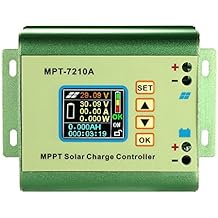Tomcor
Well-known member
- Joined
- Apr 22, 2015
- Messages
- 245
- Reaction score
- 0
Thinking about buying an 36v 8.8ah ebike. I have a 175w mppt solar setup on my van.
What size and type of invertor would I need to charge the ebike? How long would it take to charge the battery pack? Anyone charging a 36v ebike with your solar?
Also have a separate Renogy 30w mono panel that I was thinking of using to charge with a dc to dc stepup voltage converter at 42v. Instead of using an invertor and my other large panel.
What size and type of invertor would I need to charge the ebike? How long would it take to charge the battery pack? Anyone charging a 36v ebike with your solar?
Also have a separate Renogy 30w mono panel that I was thinking of using to charge with a dc to dc stepup voltage converter at 42v. Instead of using an invertor and my other large panel.

































































